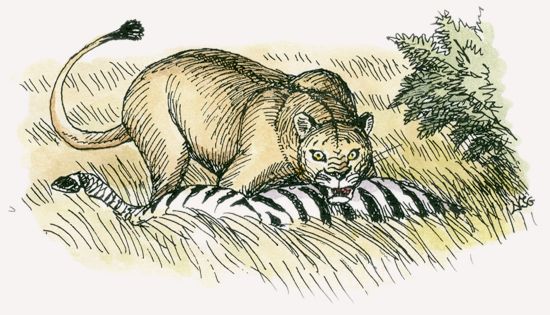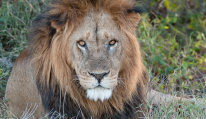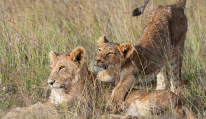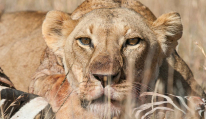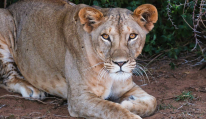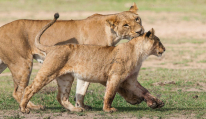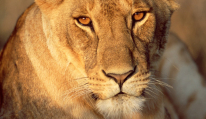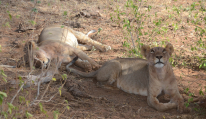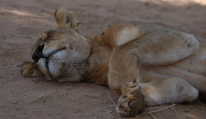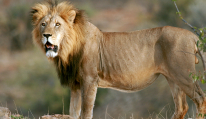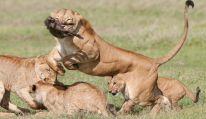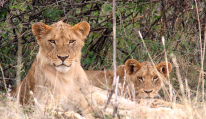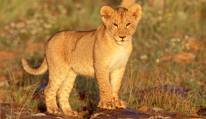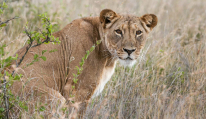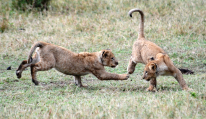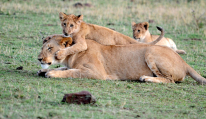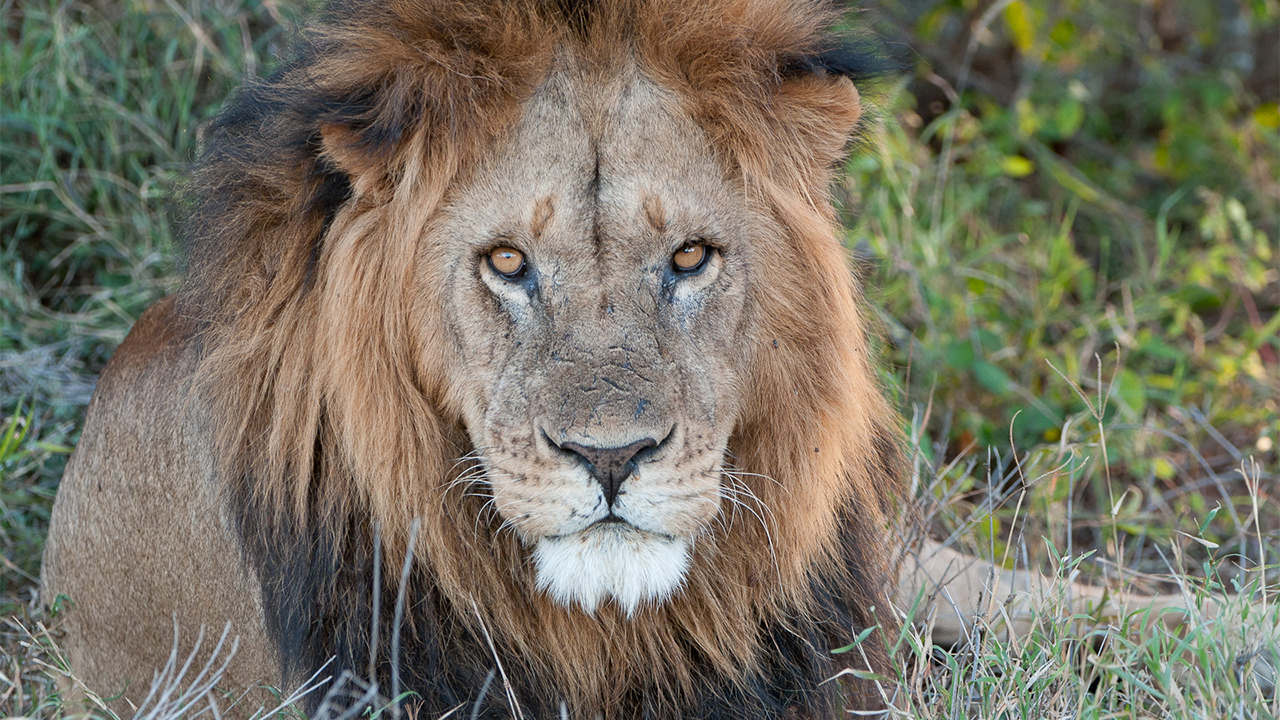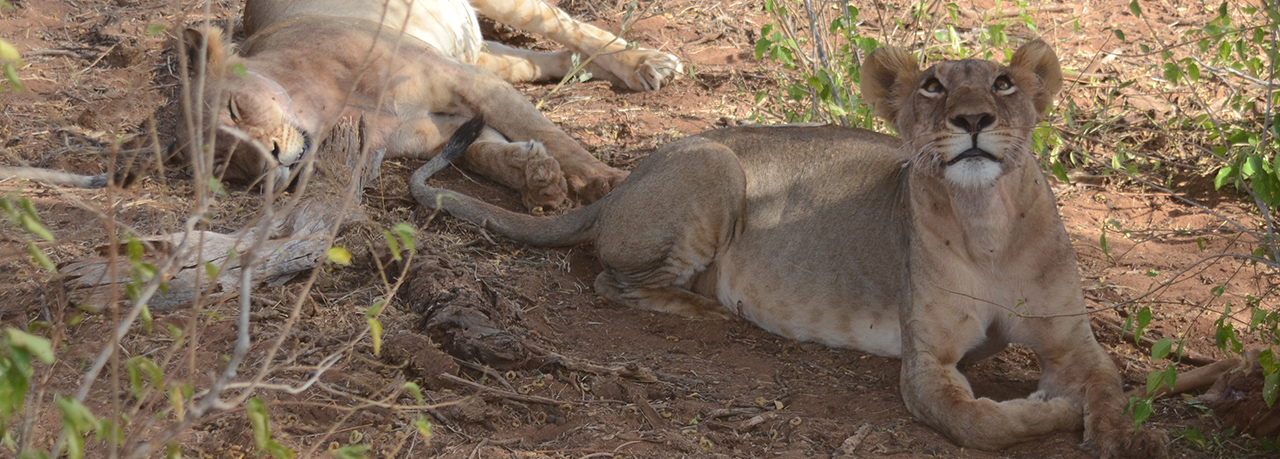Social Structure
The only social species of cat, both male and female lions are territorial. Good territories include reliable water, sufficient prey, and places to hide cubs. Most prides keep the same territories for a long time. Territory size depends on the quality and availability of prey. With abundant prey around, territories can be quite small. Though a pride occupies a territory, individual members aren’t always found all together. Individuals often break off to spend time in small sub-groups or by themselves. The females in a pride are close relatives. Female cubs stay in their mother’s pride, though they’ll disperse if their father is still the dominant male when they reach sexual maturity. Females don’t seem to have a dominance structure and will help each other raise cubs—to the point of nursing each other’s babies. Male lions disperse from their birth prides as groups of brothers or half-brothers and fight the resident males of other prides in attempts to take over the females. When a new male does take over a pride, he will kill the cubs of the old male. Females in these prides will come into heat soon after, and within a few months they will produce cubs fathered by the new males. Incoming males may evict juvenile females along with competing males.
Communication
The most impressive of all lion vocalizations is the roar. Prides roar in chorus to cement their identity as a group and to warn off neighboring lions and prides. Visual communication is also key. A male’s mane serves both to intimidate other males and to attract females. Studies have indicated that the longer and darker a mane is, the more effective it is in scaring off competition and winning over females. The dark tufts of hair on a lion’s ears and tail allow lions to follow each other through tall grass.
Behavior
Resting or sleeping for most of the day helps lions conserve energy and resist overheating. They are most active at night. They also cool off by panting or lying on their backs and exposing their bellies to cool breezes. Lions, especially young lions, climb trees to find cool, shady, fly-free places to rest. Resting on high places, such as hilltops and termite mounds, also allows them to keep an eye on their territory and look for their next meal.
Conservation
Lions are classified as a vulnerable species. While they’re not in immediate danger of extinction, their population trend is decreasing and their future is in doubt. Lions need large tracts of land and strong prey bases to survive. Lions are threatened by habitat degradation and conflict with humans that arises because lions take livestock when wild prey has been reduced due to human hunting. Across East Africa there has been a rise in the use of poison to kill lions. When a lion kills a cow, a rancher will sometimes retaliate by poisoning the carcass. When the lion returns—sometimes with other pride members—it ingests the poison and eventually dies.

